Have you ever marveled at the striking blue eyes of a Siamese or wondered why some cats have those mesmerizing split-face patterns? The rainbow of cat fur colors and patterns we see today is the result of thousands of years of genetic evolution, creating the beautiful diversity we adore in our feline companions. Whether you’re looking to identify your cat’s unique coloration or simply curious about the genetics behind these magnificent creatures, this comprehensive guide will walk you through everything you need to know about cat fur colors.
From the mysterious all-black cat to the rare and captivating lilac point, cat colors span a broader spectrum than many pet owners realize. Let’s explore this vibrant world of feline genetics and discover what makes each cat’s coat a one-of-a-kind masterpiece.
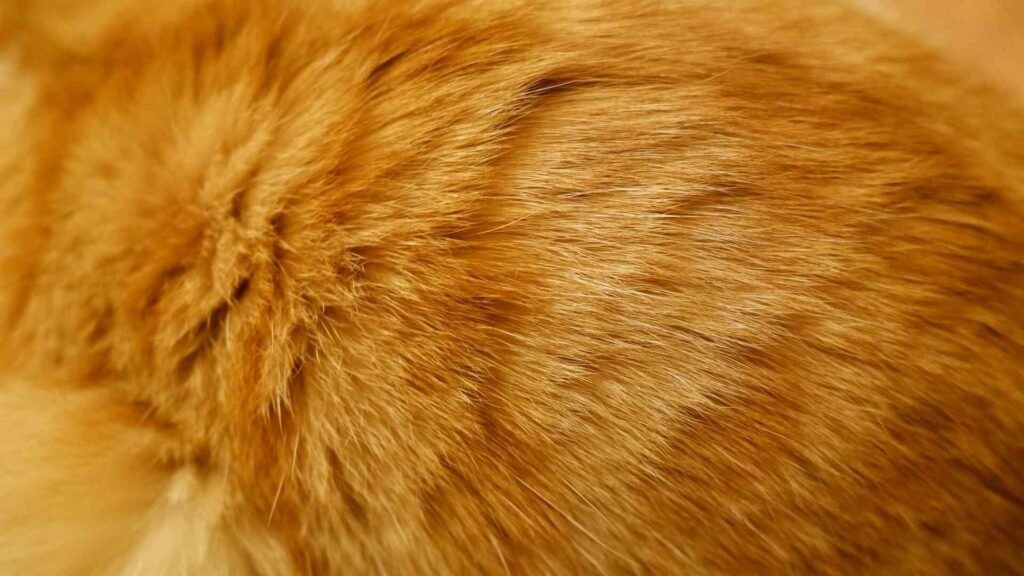
The Basics of Cat Fur Colors
At the genetic level, cat fur colors are determined by specific genes that control pigmentation. These genes dictate not only the basic color but also how that color is distributed across the cat’s body, creating the distinctive patterns we recognize.
The two primary pigments in cat fur are:
- Eumelanin: Responsible for black and brown colors
- Phaeomelanin: Creates red and orange hues
The interaction between these pigments, combined with genetic modifiers that dilute or alter their expression, creates the vast array of cat colors we see today.
Primary Cat Colors

Black
One of the most common and striking cat colors, black cats have a rich history across many cultures. Their sleek, ebony coats result from a dominant expression of eumelanin pigment. Interestingly, many black cats aren’t purely black, in bright sunlight, you might notice rusty brown undertones, particularly in cats who spend time outdoors.
True black cats have black paw pads and nose leather, though some may have a small white spot on their chest known as a “locket.” Despite old superstitions, black cats make wonderful companions and are often described as especially affectionate and playful by their owners.
White
White cats aren’t actually expressing a color but rather a masking of other colors. This occurs through two different genetic mechanisms:
- White masking gene: Completely covers any other colors the cat might genetically have
- Albinism: A rare condition causing absence of all pigment
White cats with blue eyes have a higher likelihood of congenital deafness, though this doesn’t affect their quality of life when provided with appropriate care. The striking all-white coat demands some extra attention, as it shows dirt more readily.
Orange/Red
Often called “ginger” or “marmalade” cats, orange felines display a warm spectrum of colors from pale cream to deep rust. This coloration is sex-linked, appearing more frequently in males than females because the gene responsible is carried on the X chromosome. Female cats need two copies of the gene to be fully orange, while males need only one.
Most orange cats display some form of tabby patterning, even if it’s subtle. Their vibrant coats tend to be eye-catching and are associated with friendly, outgoing personalities in popular culture, though coat color alone doesn’t determine temperament.
Brown/Chocolate
Less common than black, brown cats display a gene variant that produces a rich, warm chocolate color. This color is especially prized in breeds like the Havana Brown and certain Oriental Shorthairs. The chocolate gene is recessive, meaning both parent cats must carry it to produce chocolate kittens.
Blue (Gray)
“Blue” in cat terminology refers to a diluted black, appearing as various shades of gray. This dilution gene softens the intense black pigment to create a softer, blue-gray appearance popular in Russian Blues, Chartreux, and many mixed-breed cats. Blue cats often have striking yellow or copper eyes that create a beautiful contrast with their coat.
Cream
A dilute version of orange, cream cats display a soft, pale orange color that resembles its namesake. This dilution follows the same sex-linked pattern as orange coloration, making cream males more common than cream females.
Lilac/Lavender
One of the rarest natural cat colors, lilac results from a combination of chocolate and dilution genes. The result is a pale, warm gray coat with distinctly pinkish undertones, most commonly seen in certain purebreds like the Siamese and Colorpoint Shorthair.
Cinnamon and Fawn
These uncommon colors represent specific mutations of the black gene. Cinnamon appears as a warm reddish-brown, while fawn is its dilute counterpart, showing as a pale, dusty rose-beige. These colors are rare in the general cat population but may be specifically bred for in certain pedigree lines.
Points and Temperature-Sensitive Coloration
Some of the most distinctive cat colorations come from the fascinating “pointed” pattern made famous by Siamese cats. This temperature-sensitive coloration results from a gene that partially inhibits pigment production except in the cooler parts of the body, typically the face, ears, paws, and tail.
Common point colors include:
- Seal point: Dark brown, almost black points
- Blue point: Gray-blue points
- Chocolate point: Milk-chocolate brown points
- Lilac point: Pale, pinkish-gray points
- Flame point: Orange-red points
- Cream point: Soft pale orange points
- Lynx point: Pointed coloration with tabby striping in the points
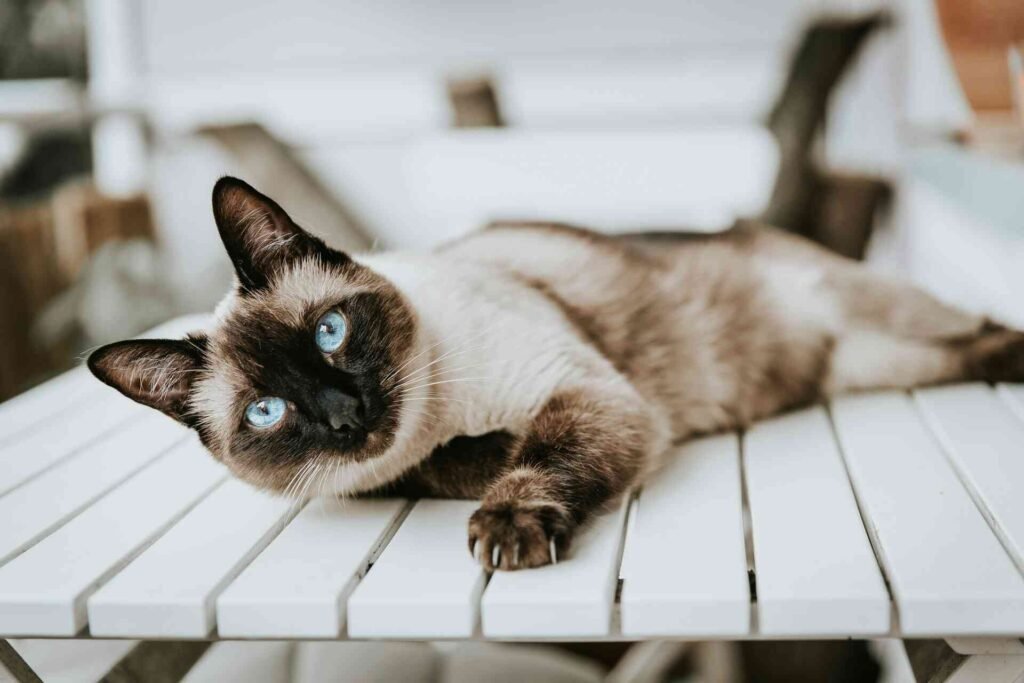
While most commonly associated with Siamese cats, pointed coloration can appear in many breeds, including Ragdolls, Himalayans, and Birmans. It’s even possible for mixed-breed cats to display pointed patterns if they carry the responsible gene.
Common Cat Coat Patterns
While color refers to the pigmentation, patterns describe how those colors are distributed across the cat’s coat. These patterns can appear in various colors, creating the remarkable diversity we see in cats.
Tabby Patterns
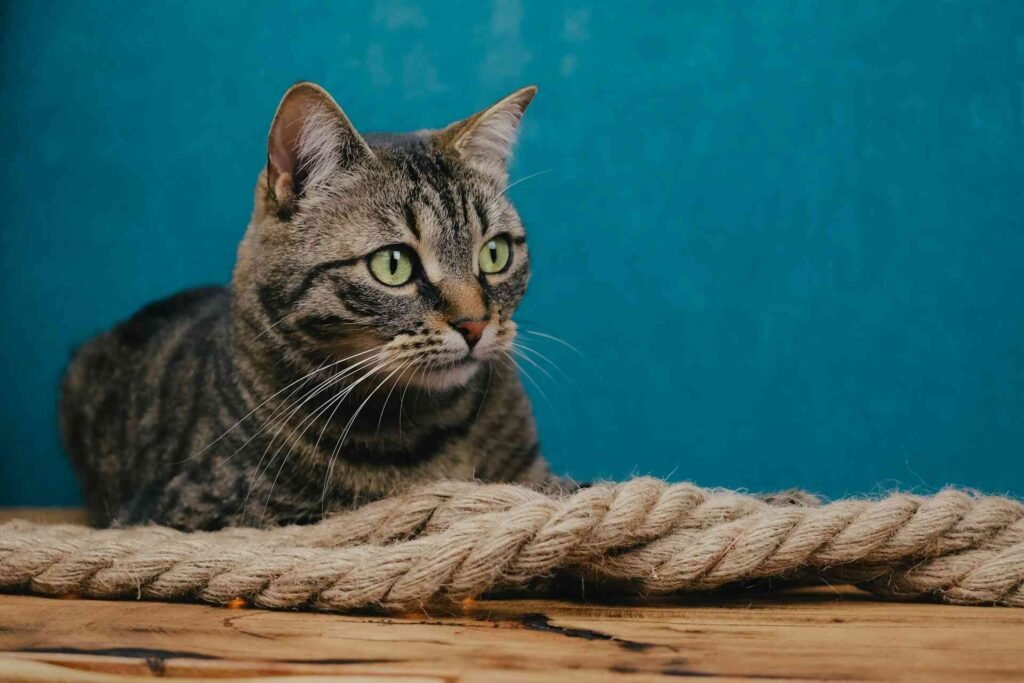
The most common pattern in domestic cats, tabbies display distinctive markings that can appear in almost any color. There are four main types of tabby patterns:
Classic (Blotched) Tabby
- Resembles a marble cake pattern
- Features wide, swirling stripes forming bullseyes on the sides
- Always displays the characteristic “M” marking on the forehead
Mackerel Tabby
- Displays narrow stripes running parallel down the sides, resembling a tiger
- Features rings around legs and tail
- The most common tabby pattern in mixed-breed cats
Spotted Tabby
- Shows distinct spots across the body instead of continuous stripes
- Spots may be large or small
- Sometimes a variation of the mackerel pattern where stripes break into spots
Ticked Tabby
- Individual hairs have bands of color, creating a salt-and-pepper look
- Minimal to no striping on the body
- Most famously seen in Abyssinians
Solid Color
A cat with a solid coat displays a single color throughout the entire body, though some may have subtle shading variations. Solid black, white, blue, and cream are among the most common, while solid chocolate, cinnamon, and fawn are much rarer.
Bicolor Patterns
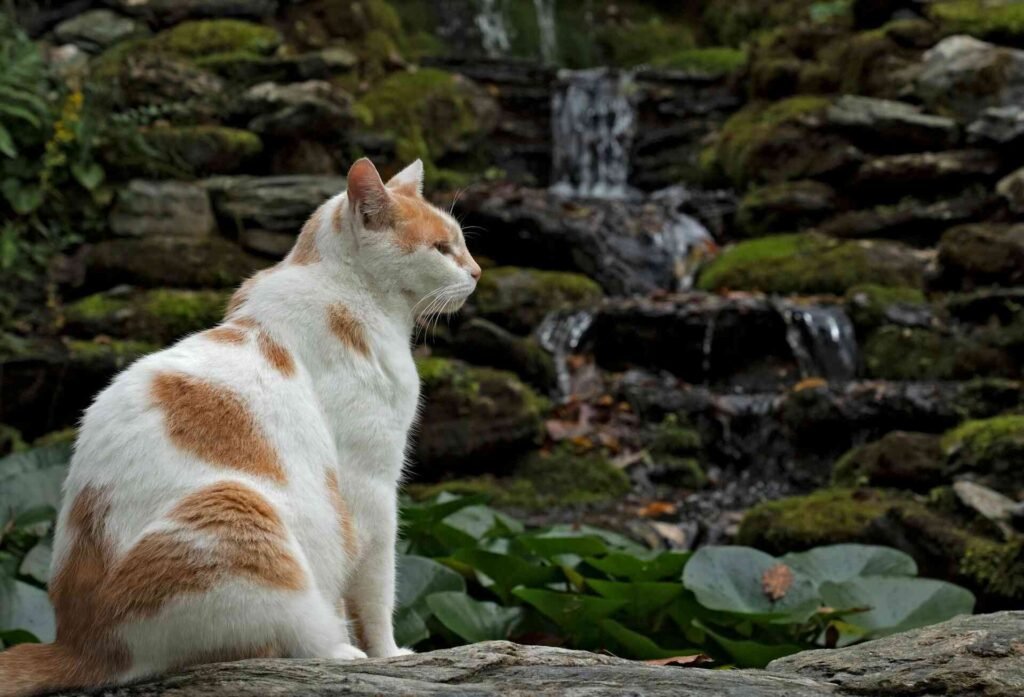
These cats display a combination of white and another color, with several recognized patterns:
Tuxedo
- Primarily black with white chest, paws, and sometimes face
- Resembles a formal tuxedo
Van
- White body with colored head and tail
- Named after the Turkish Van breed
Harlequin
- Mostly white with scattered patches of color
- More white than in a standard bicolor pattern
Mask and Mantle
- White underbelly with color “draped” over back like a mantle
- Colored face and tail
Tortoiseshell and Calico
These striking patterns show patches of multiple colors:
Tortoiseshell (Tortie)
- Mottled pattern of black and orange
- Almost exclusively found in female cats due to genetics
- No white in a pure tortoiseshell
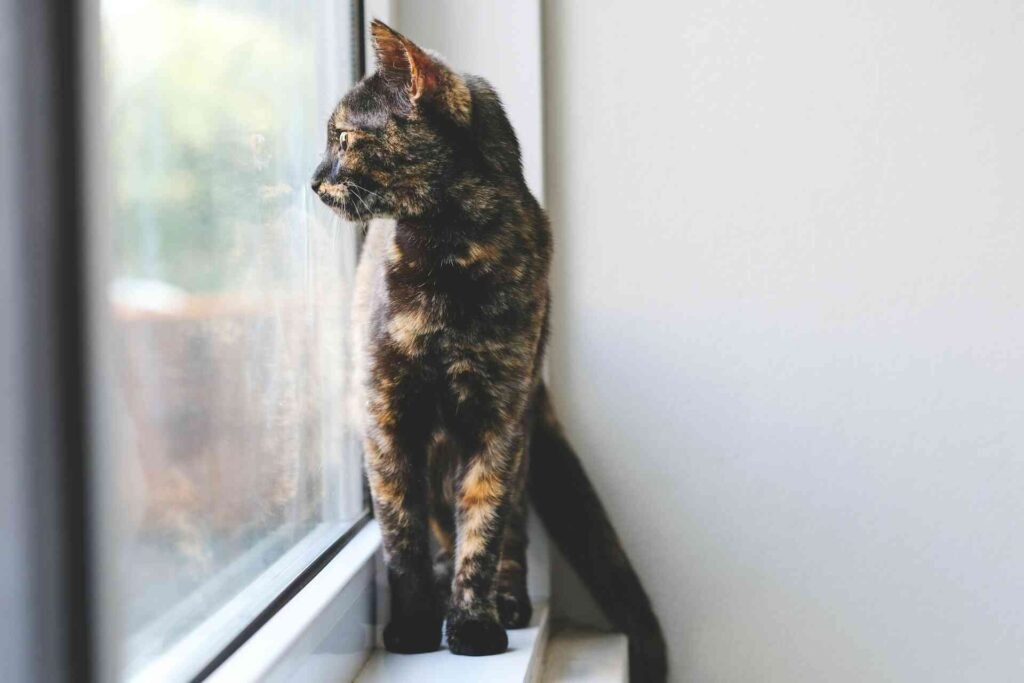
Calico
- Distinct patches of white, black, and orange
- Also primarily found in females
- One of the most visually distinctive cat patterns
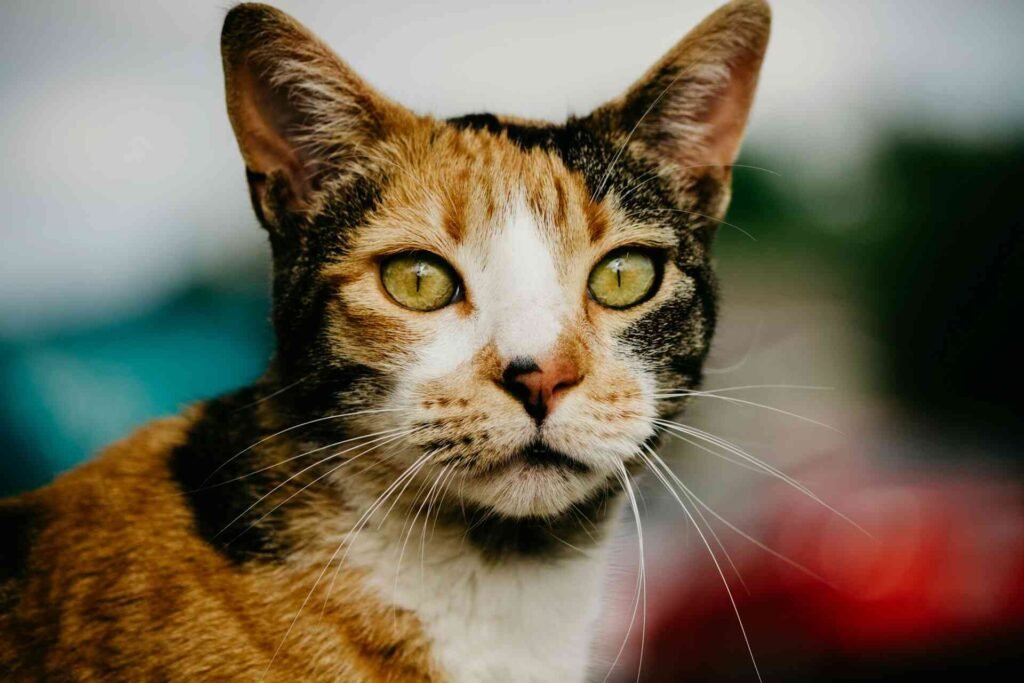
Dilute Tortoiseshell/Calico
- Same patterns but with diluted colors
- Blue (gray) and cream instead of black and orange
Colorpoint
As described earlier, the colorpoint pattern features a lighter body color with darker extremities. Beyond the traditional Siamese points, more complex variations include:
Tortie Point
- Points show tortoiseshell coloration
- Main body color remains lighter
Lynx Point
- Tabby markings visible within the darker points
- Creates a striking appearance especially visible on the face
Cat Color Genetics: How Cats Get Their Color
The genetics behind cat coat colors is a fascinating subject that explains why certain colors and patterns appear. Here’s a simplified explanation:
- Base Color Genes: Determine black, brown, or red
- Dilution Genes: Lighten base colors to blue, lilac, or cream
- White Spotting Genes: Control how much white appears in the coat
- Agouti Gene: Determines whether tabby patterns are expressed or suppressed
- Point Restriction Gene: Controls temperature-sensitive coloration
When cats breed, they pass a combination of these genes to their kittens, which is why predicting kitten colors can be complicated, especially with mixed-breed cats. In general, a female cat can produce kittens displaying a wider range of colors than those found in either parent, creating beautiful surprises in each litter.
Rare Cat Colors and Patterns
Cat enthusiasts often seek out unusual colorations. Here are some of the rarest cat colors and patterns:
Silver/Smoke
Silver cats have hair shafts that are white at the base and colored at the tips, creating a shimmering effect when they move. Smoke cats show this effect more dramatically, appearing dark until they move, revealing the lighter undercoat.
Tortoiseshell Male Cats
Because the genes for orange and black coloration are carried on the X chromosome, male tortoiseshell cats are extremely rare, occurring only with specific genetic anomalies like XXY chromosomes. These rare males are often sterile.
True Albino
Different from white cats, true albino cats lack all pigmentation and have pink eyes due to visible blood vessels. This genetic condition is extremely rare in cats.
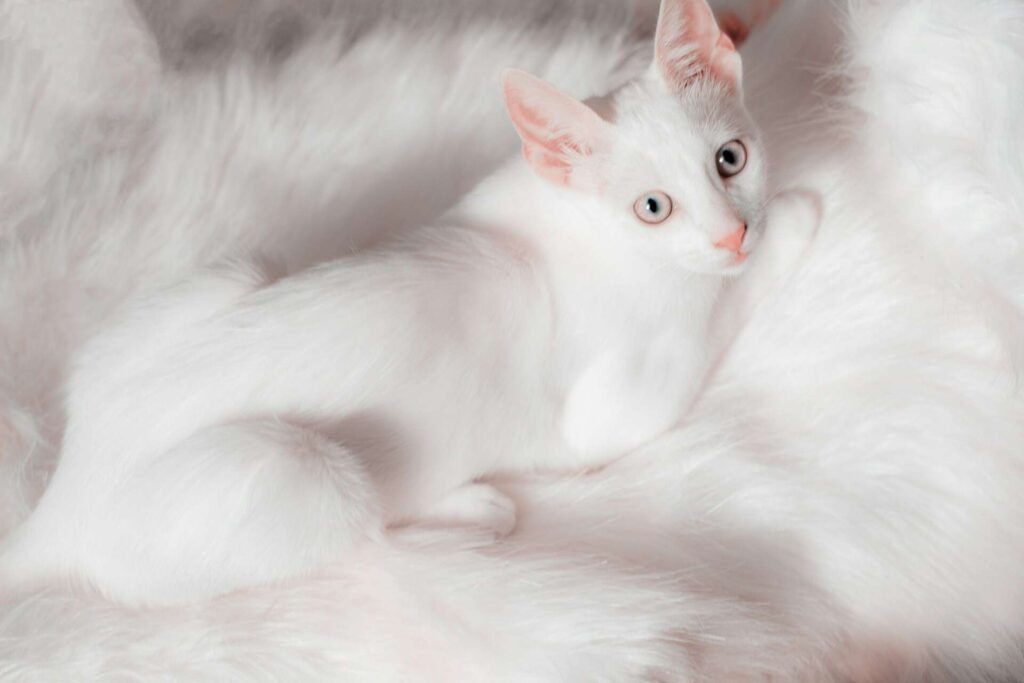
Amber
Found almost exclusively in Norwegian Forest Cats, amber coloration starts as black in kittens and gradually transforms to a warm amber color as the cat matures.
Color Comparison: Common Cat Colors and Their Characteristics
| Color | Appearance | Notable Breeds | Genetic Notes | Rarity |
|---|---|---|---|---|
| Black | Deep ebony | Bombay, Mixed breeds | Dominant gene | Common |
| White | Pure white | Turkish Angora, Persian | Masking gene or albinism | Common |
| Orange | Ginger to deep rust | Maine Coon, American Shorthair | Sex-linked (X chromosome) | Common |
| Blue | Soft gray | Russian Blue, Chartreux | Dilution of black | Moderately common |
| Chocolate | Rich brown | Havana Brown, Oriental | Recessive gene | Uncommon |
| Lilac | Pale pinkish-gray | Siamese, Colorpoint Shorthair | Double recessive (chocolate + dilution) | Rare |
| Cinnamon | Warm reddish-brown | Abyssinian, Oriental | Rare mutation | Very rare |
| Fawn | Pale dusty beige | Oriental Shorthair | Dilute cinnamon | Extremely rare |
How Age and Environment Affect Cat Colors
Cat colors can change over time due to various factors:
Age-Related Changes
Kittens often change color as they mature. Dark kittens may develop rusty highlights, while pointed kittens are born almost white and develop their points over weeks. Some breeds, like the amber Norwegian Forest Cat, dramatically change from dark to light as they age.
Sun Exposure
Just like fabric, cat fur can be bleached by the sun. Black and dark-colored cats who spend time outdoors often develop a rusty tinge to their coat, especially in summer months. This process, called “rusting,” is harmless but can significantly alter appearance.
Diet and Health
Nutritional deficiencies can affect coat color and quality. For example, the amino acid tyrosine is essential for producing black pigment, and cats with deficiencies may develop reddish tints in their black fur. As we discuss in 12 Human Foods Your Cat Should Never Eat, proper nutrition is crucial for maintaining not just coat color but overall health.
Frequently Asked Questions About Cat Colors
What Is the Rarest Color of Cat?
The rarest naturally occurring cat colors include true albino, amber, and certain color combinations like chocolate-silver tabby. Among more common cats, male tortoiseshell and true red (without tabby markings) are particularly uncommon.
How Can I Tell What Color My Cat Is?
Look at your cat in natural daylight, checking both the overall color and the roots of the fur. Note any patterns and markings, particularly on the face, legs, and tail. Compare to color guides and breed standards, keeping in mind that many cats are unique combinations that don’t fit neatly into categories.
Do Cat Colors Affect Personality?
While many owners report personality trends associated with certain colors (such as the belief that orange cats are friendly or calicoes are sassy), scientific research has found limited evidence supporting strong correlations between coat color and temperament. Individual personality, socialization, and environment play much larger roles in determining a cat’s behavior.
What Colors Can My Cat’s Kittens Be?
Predicting kitten colors requires understanding both parents’ genetic makeup. Generally:
- Two black cats can produce black kittens
- A black and an orange cat can produce tortoiseshell females and either black or orange males
- Two white cats with different underlying genetics might produce kittens of various colors
For specific predictions, consulting with a veterinarian or feline geneticist who can evaluate the parents’ genetic makeup would provide the most accurate forecast.
Why Do Some Cats Have Different Colored Eyes?
Heterochromia (different colored eyes) most commonly occurs in white cats but can appear in any color. It results from genetic factors affecting melanin distribution during development and is typically harmless. The striking blue and gold or green combination is particularly prized by many cat lovers.
Conclusion
The fascinating world of cat fur colors represents one of nature’s most beautiful displays of genetic diversity. From the common tabby to the rare silver smoke, each coloration tells a story of evolutionary adaptation and selective breeding throughout the centuries of feline domestication.
Understanding your cat’s unique coloration adds another dimension to appreciating these remarkable companions. Whether you have a classic black cat or a rare lilac point, your feline friend’s coat is a living canvas that reflects their genetic heritage and individual beauty.
Next time you find yourself admiring your cat’s particular shade of fur or the intricate pattern on their coat, remember the complex genetics and natural wonder that created such perfection. And if you’re interested in learning more about how coat types interact with these beautiful colors, check out our comprehensive article The Complete Guide to Cat Fur Patterns and Types.
Looking for more? Visit our Blog for more fun and insightful reads, or browse our full Cat Category for everything feline-related, from care to comfort.
Disclaimer: This article is for informational purposes only and does not substitute for professional veterinary advice. Always consult your veterinarian for diagnosis and treatment tailored to your cat’s individual needs.
References
- Eduardo Eizirik, Victor A David, Valerie Buckley-Beason, Melody E Roelke, Alejandro A Schäffer, Steven S Hannah, Kristina Narfström, Stephen J O’Brien, Marilyn Menotti-Raymond, Defining and Mapping Mammalian Coat Pattern Genes: Multiple Genomic Regions Implicated in Domestic Cat Stripes and Spots, Genetics, Volume 184, Issue 1, 1 January 2010, Pages 267–275, https://doi.org/10.1534/genetics.109.109629
- González-Ramírez, M. T., & Landero-Hernández, R. (2022). Cat Coat Color, Personality Traits and the Cat-Owner Relationship Scale: A Study with Cat Owners in Mexico. Animals, 12(8), 1030. https://doi.org/10.3390/ani12081030
- Kaelin, C.B., McGowan, K.A. & Barsh, G.S. Developmental genetics of color pattern establishment in cats. Nat Commun 12, 5127 (2021). https://doi.org/10.1038/s41467-021-25348-2
- Cat coat genetics. https://en.wikipedia.org/wiki/Cat_coat_genetics
Check out our most recent articles!
- Do Cats Sleep More in Fall? Seasonal Snooze Patterns ExplainedAutumn transforms even the most playful cats into professional nappers. But is your feline’s increased sleepiness just seasonal adjustment or something more? Here’s what’s really happening when the leaves start falling.
- Best Halloween Cat Trees: Gothic Furniture Your Cat Will Love Year-RoundWhy settle for boring beige cat furniture when you could give your feline a gothic throne? Halloween cat trees combine spooky aesthetics with year-round functionality, offering everything from coffin-shaped beds to spider-web platforms.
- Can Cats Sense Weather Changes? Decoding Your Cat’s Inner MeteorologistCats aren’t psychic, but their sensory superpowers make them excellent storm detectors. From hearing distant thunder to feeling pressure changes in their ears, discover what your cat knows about tomorrow’s weather that you don’t, and how to help them cope with weather anxiety.
- How Long Does It Take for Cat Whiskers to Grow Back?Ever found a mysterious whisker on your carpet and wondered if it’ll grow back? The good news is that cat whiskers do regrow, typically within 6-12 weeks, though several factors can influence this timeline.
- How to Get a Scared Cat Into a Carrier: Stress-Free Solutions That Actually WorkForcing a scared cat into a carrier backfires every time. Smart cat parents use patience and positive associations to transform that dreaded plastic box into a welcome retreat.
- Why Does My Cat Act Scared of Me Sometimes? Cat Fear and Building TrustWhen your beloved cat suddenly seems frightened of you, it can feel heartbreaking. But feline fear has identifiable causes and proven solutions that can restore your special bond.
- Do Dental Treats for Cats Actually Work? Feline Oral Health ExplainedWhile dental treats can’t work miracles, they’re surprisingly effective tools for maintaining feline oral health when used correctly. Discover which products actually deliver results and how to maximize their benefits for your cat’s teeth and breath.
- Where Do Feral Cats Sleep? Outdoor Cat Resting SpotsEver wondered where neighborhood cats disappear at dusk? Discover the fascinating world of feral cat sleeping habits and the survival instincts that guide their nightly shelter choices.
- Why Does a Mother Cat Bite Her Kitten’s Neck? Feline Maternal BehaviorNature’s Perfect Transport System: Ever wondered why mother cats carry kittens by the neck? This ancient behavior triggers a special relaxation response that keeps babies safe during moves, and it’s far more sophisticated than it looks.
- Are Stainless Steel Bowls Good for Cats? Upgrading Your Cat’s Feeding ExperienceWhile plastic bowls develop bacteria-harboring scratches and ceramic can chip dangerously, stainless steel maintains its smooth, hygienic surface for years. Learn why this simple switch could transform your cat’s mealtime.










